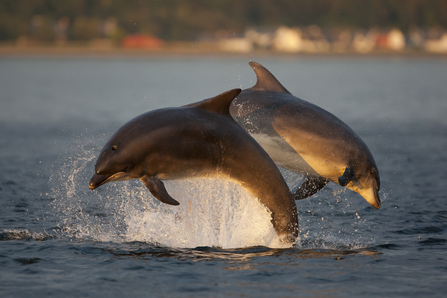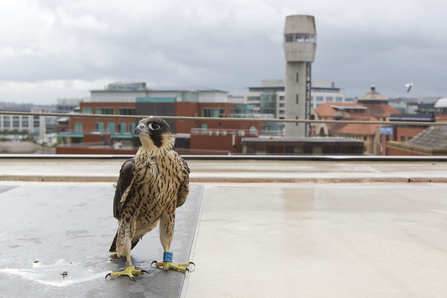Post-Brexit many laws that had originated from the European Union were carried across into domestic UK law, through the European Union Withdrawal Act 2020. But recently, Government introduced a new bill, the Retained EU Laws Bill, which would remove the 2,400+ laws in the UK, which had their origins in European Union legislation. The aim is for these laws to be reviewed by the end of 2023 – with any that have not been looked at by government civil servants (which is highly likely due to the sheer number of them) – simply expiring under what is called the ‘sunset clause’. This presents a great threat to our wildlife, with most of our laws that protect wildlife originating from the European Union. In particular, it could have a huge impact on our endangered – or in some cases, recovering – species, examples of which we share here.
Wildlife laws under threat: protected species
Otters by Ali Morse
In the 1970s, otters were facing extinction in Britain and much of western Europe – their homes were being lost, as suitable river habitat disappeared and they were being poisoned by chemicals, heavy metals, and other pollutants, as well as suffering from persecution.
Regulation introduced by the European Union saw many of the worst offending chemicals banned and required polluters to take action to reduce water pollution from those still in use. In addition, the otter also became a European Protected Species, which made it illegal to kill, injure, disturb or capture them, and an offence to destroy their breeding and resting sites. This helped protect them from persecution and meant that developers had to avoid or compensate for any negative effect a building project might have on the species. What’s more, 75 Special Areas of Conservation were designated to protect otters and their habitats, under another piece of EU legislation, known as the Habitats Directive (see our earlier blog on this).
Together, this raft of protections brought otters back from the brink here in the UK, and by 2011, otters had returned to every country in England!
Change in distribution and population numbers of otters in England.
(Maps from PTES)
Bottlenose dolphins by Christina Platt
If you are taking a walk along the British coastline and cast your eyes out to sea, you might be lucky enough to spot a pod of bottlenose dolphins playing together and jumping out of the water. The bottlenose dolphin is the most common species of dolphin in the UK and our native dolphins are the largest bottlenose dolphins in the world. Their size helping them to cope with our cold sea temperatures!
Had it not been for European Union legislation however, you would be a lot less likely to spot them ‘bowriding’ alongside a boat, using the waves created by the boat to surf. In the UK we have several marine protected areas designated specifically to protect bottlenose dolphins, such as the Moray Firth Special Area of Conservation in Scotland and Cardigan Bay Special Area of Conservation in Wales. These conservation areas are incredibly important, as they help to protect the dolphins from human activity. Human-related threats include dolphins being caught as ‘bycatch’, where dolphins get caught in fishing nets and are unable to return to the surface to breath, or disturbance caused by underwater noise, which disorientates the dolphins and reduces their ability to feed. Bottlenose dolphins are incredibly sensitive to these types of threats, as not only do we have a small population in the UK (~300 animals in inshore waters), but they are also very loyal to their ‘patch’.
If we were to lose these marine protected areas and the legislation that underpins them, we would be putting our bottlenose dolphins at a greater risk of harm and disturbance, which could mean that spectacular dolphin sightings become a rarer occurrence in UK waters.

Bottlenose dolphins ©John MacPherson/2020VISION
Peregrine falcon by Sue Young
It is not unusual these days to see a peregrine perched on the ledge of a skyscraper or cathedral. If you are lucky you might even see them dive downwards at speeds of up to 200 miles an hour to catch their prey. Fifty years ago it was a very different story. Environmental poisoning had brought peregrines to the brink of extinction in the UK. The main culprit was a pesticide known as DDT. This was absorbed by insects and transferred up through the food chain, becoming more concentrated until it accumulated in large doses in the bodies of top predators such as peregrines and other birds of prey. The poison affected the shells of the peregrine’s eggs, making them so thin that they were crushed in the nest.
Britain banned the use of DDT in 1986 and peregrines began to return to our skies. Since then, EU laws that the UK helped to develop have given peregrines the highest level of protection, whilst other EU derived laws control the use of harmful pesticides including chemicals that accumulate in the food chain (bioconcentration). The future was looking good for peregrines, protected from harm and the destruction of their habitat, and insidious poisons in the environment.
But there has been a tide of rhetoric against environmental regulations that are accused of getting in the way of development. The UK Government has talked about bulldozing environmental regulation. Does this mean the peregrine, our new urban resident, could lose its protected status? Worse still, does the UK Government want to row back on pesticide regulation? We already see permission granted for some banned chemicals to be used in this country, against scientific advice. If the EU derived laws on pesticide use are lost, recovering populations of peregrines are no longer safe.

© Bertie Gregory/2020VISION
What you can do to help
Our protected species are too precious to open them up to the level of threats and disturbances that have seen their numbers decline to precarious lows in the past. If we lose these laws, there is a real risk we’ll lose a lot of our wildlife too. That’s why we’re asking everyone who cares about the environment to contact their MP or councillor, asking them to do all they can to defend nature.
Sources:
- https://www.gov.uk/guidance/using-persistent-organic-pollutants-pops#list-of-pops
- https://ec.europa.eu/environment/water/water-dangersub/pri_substances.htm
- https://www.gov.uk/guidance/otters-advice-for-making-planning-decisions
- https://sac.jncc.gov.uk/species/
- https://www.theguardian.com/environment/2011/aug/18/otters-return-british-rivers#:~:text=It%20has%20been%20a%20long,into%20every%20county%20in%20England
-
https://web.stanford.edu/group/stanfordbirds/text/essays/DDT_and_Birds.html

